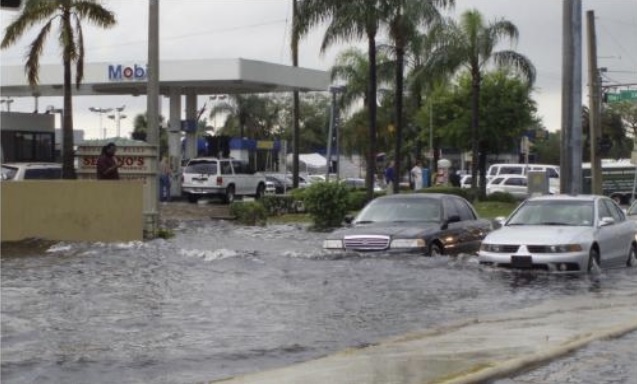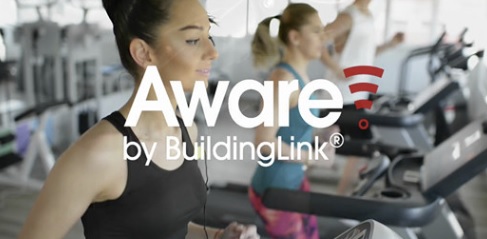The Plan – Identifying the Potential Consequences of a Disaster
by BECKER
The first step toward developing and implementing a disaster plan is identifying the potential consequences of a disaster. The second step is to develop and implement a plan to mitigate the impact of a disaster to the fullest extent possible.
Evacuation
Emergency evacuation routes and special instructions regarding use of elevators and stairwells should be clearly posted. Don’t forget to rehearse evacuation procedures on a periodic basis.
Destruction of Real Property
Damage or destruction of real property is often the primary claim and causes the greatest hardship. The main areas of concern include:
- Buildings and other structures
- Landscaping
- Roads and Pathways
Damage to Personal Property
The items most at risk during a disaster are furniture, fixtures, and personal property. The items of most concern include:
- Electronic equipment, data and other forms of technology
- Indoor and outdoor furniture, art, lighting, pool equipment, pool furniture and assorted fixtures
- Documents and important papers such as governing documents, Association surveys, plans, insurance policies.
- Rental and owner records and personnel files
- Accounting records
- Vehicles and equipment
Injury or Loss of Life
Carbon monoxide poisoning, heart attacks and drowning are the top three causes of death as a result of a hurricane. People over 75 are particularly at risk. Identify “high risk” individuals with disabilities or medical needs requiring special attention when preparing your community’s disaster plan.
Relocation
Your disaster plan should anticipate not only the possibility of a total casualty loss, but also the need to relocate, temporarily or permanently, depending on the level of impact. While many communities are able to clean up storm debris promptly, many others will remain in turmoil for quite some time after being impacted by a disaster. After Hurricane Opal and the BP Oil spill, some owners were unable to rent out their units which resulted in a loss of significant income to them and, in some cases, ultimately resulted in the loss of the property to foreclosure.
Impact on Employees
The board should consider the emotional impact a storm’s approach has on the association employees, particularly an onsite manager. Association employees will not only be responsible for preparing the community for a storm’s approach, but they are also concerned about preparing their own homes and families for the potential disaster.
Associations are well advised to task their attorneys with creating a reasonable approach to these pre- and post-storm employee policies.
Economic Impact
The economic impact of a disaster can be extensive. Unit owners displaced from work may be unable to meet their financial obligations to the association. Uninsured, underinsured or non-covered losses under both the association’s policy as well as the owner’s policy may require the board to pass special assessments. The higher cost of goods and services resulting from shortages further compounds the problem in the shortterm.
In sum, the impacts of a disaster will vary from event to event. It is advisable to prepare for all possibilities.

Becker Shareholder Donna DiMaggio Berger will join CASTLE for episode 12 of their webinar series “Combatting COVID-19 In Your Community Association,” on July 8 at 12:00 p.m.
She will be joined by CASTLE founder and CEO James Donnelly.
Register now: http://ow.ly/QCxl50Aneca #Webinar #CommunityAssociations #BeckerFTL
Planning for a disaster
Designation of a Disaster Coordinator or Disaster Committee
The ability of a community association to minimize its damages and speed up its recovery depends in large part upon its preparation.
Every disaster plan should include having a person or committee in place prior to the disaster with full authority to implement the Disaster Plan.
Designation of an Information Facilitator
In times of crisis, communication is key. A major hurdle to recovery is rumor and misinformation; both can hamper successful recovery efforts. An information facilitator can help to stop the rumor mill in its tracks. Today’s computer and smart phone technology provide the ideal vehicles to communicate with residents. Every association should have its own website, which can be a great resource for disseminating information and staying in touch with the unit owners. A text messaging system for community members is also valuable for disseminating information quickly.
Home and cell phone numbers must be collected before a disaster and stored in a safe, easily accessible location.
A properly prepared plan will include plans for temporary relocation of residents in situations where the community must be evacuated. This can include Red Cross or other emergency shelters, hotels, schools, or staying with family members in other cities.
Now that the Florida Legislature has granted emergency powers to boards, a board may require the evacuation of the property in the event that the local or state authority has declared a mandatory evacuation order. Owners who refuse to abide by that evacuation order do so at their own risk and without the possibility of pursuing the association for loss of life or injury to themselves or their property. Boards can also declare the property unfit for entry or occupancy based upon the advice of experts retained by the board or on the advice of emergency management officials.
Photographic Imaging
Your plan should include annual preparation of a date stamped video and photo documentation of the community such as all of the common areas, each unit owner’s home, the association’s office and property.
Digital technology and photographic records can be conveniently and safely stored off premises and easily retrieved, if needed.
What should be photographed?
Specifically include:
- Inside and outside of buildings and premises
- equipment, computers and books
- accounting records
- insurance policies, bank accounts, personnel records, records of units/ unit owners, as-built plans and specifications
You should prepare an inventory including the date, place of purchase, and purchase price of each item of personal property.
Community Emergency Response Team (CERT)
Many shared ownership communities have already taken the positive step of undergoing CERT training under the auspices of FEMA. A Community Emergency Response Team (CERT) can fill the large gap that often results when a disaster overwhelms local emergency services. CERT teams are trained in basic disaster response skills, such as fire safety, light search and rescue, team organization, and disaster medical operations. CERT members are encouraged to support emergency response agencies by taking a more active role in emergency preparedness projects in their communities.
Your board’s quick response in accordance with your disaster plan will minimize damage and promote a speedy recovery.
ACTIVATING THE DISASTER PLAN

Hurricane Preparedness and Recovery Guide
Following a disaster, the disaster coordinator and information facilitator move into action. The information facilitator opens lines of communications with the owners. The disaster coordinator contacts emergency services and notifies the contractors and employees, advising of their duties and needs. In some cases, it may be necessary to suspend or cancel on-going contracts such as lawn and pool maintenance. Hopefully, a provision was made in the contract for such right of suspension without monetary penalty in disaster situations when the contracted services are no longer needed. There certainly is no reason to pay to hedge the bushes when they have all blown away!
Knowing the whereabouts of all residents greatly enhances emergency response time following a disaster. In a situation such as a hurricane, in which there is advance warning, a committee should ascertain which residents are remaining in the community and which are evacuating. A temporary destination address and phone number should be obtained from those who are evacuating. Once disaster strikes, the board’s first action should be to direct emergency medical assistance to any residents in need. Naturally, if the community is under a mandatory evacuation order, that order should be obeyed by all.
Be sure to attend to the injured and secure the community from acts of vandalism and looting. Be sure to remove all storm debris.
“Drying In”/”Shoring Up” the building structures in order to mitigate against further damage.
“Drying Out” is the removal, where necessary, of wet carpet, wall board, cabinets, etc. when necessary to prevent the growth of mold.
The insurance carrier for the community must be notified immediately at the conclusion of the storm.
If the insurance carrier is not able to promptly inspect and document the damage from the storm, it may elect to deny the claim.
Tags:
Management News,
Members Articles



 If your commercial property sustains enough damage in a short enough time to cause you to consider shuttering the doors, you have an emergency repair. This could mean:
If your commercial property sustains enough damage in a short enough time to cause you to consider shuttering the doors, you have an emergency repair. This could mean:



 When developers create residential communities and commercial areas, they need to take into account how much water needs to be stored or moved in order to prevent the project from flooding during major rain events. Through careful planning and design, they route stormwater away from our homes and into a system of lakes and canals. The size and number of lakes in our communities are a result of those calculations. Lakes are dug to create a storage area for water runoff from storms. The fill dug from the lakes is then used to raise the elevation of the homes around them.
When developers create residential communities and commercial areas, they need to take into account how much water needs to be stored or moved in order to prevent the project from flooding during major rain events. Through careful planning and design, they route stormwater away from our homes and into a system of lakes and canals. The size and number of lakes in our communities are a result of those calculations. Lakes are dug to create a storage area for water runoff from storms. The fill dug from the lakes is then used to raise the elevation of the homes around them.
















 On June 8, Miami-Dade County allowed fitness centers/gyms to reopen. A look at how one building reopened can provide valuable lessons. The Continuum is a 523-unit luxury condominium in South Beach managed by Marquis Association Management, and it is using a suite of products from BuildingLink to keep residents safe and reduce liability.
On June 8, Miami-Dade County allowed fitness centers/gyms to reopen. A look at how one building reopened can provide valuable lessons. The Continuum is a 523-unit luxury condominium in South Beach managed by Marquis Association Management, and it is using a suite of products from BuildingLink to keep residents safe and reduce liability.



